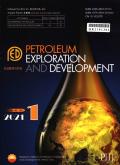Sequence stratigraphy analysis and lithofacies paleogeography reconstruction of isolated platform in a rift lake basin: Implications for deepwater hydrocarbon exploration in the subsalt of Santos Basin, Brazil
IF 8
Q1 ENERGY & FUELS
引用次数: 0
Abstract
By integrating core observations, logging data and seismic interpretation, this study takes the massive Cretaceous carbonates in the M block of the Santos Basin, Brazil, as an example to establish the sequence filling pattern of fault-bounded isolated platforms in rift lake basins, reveal the control mechanisms of shoal-body development and reservoir formation, and reconstruct the evolutionary history of lithofacies paleogeography. The following results are obtained. (1) Three tertiary sequences (SQ1–SQ3) are identified in the Lower Cretaceous Itapema–Barra Velha of the M block. During the depositional period of SQ1, the rift basement faults controlled the stratigraphic distribution pattern of thick on both sides and thin in the middle. The strata overlapped to uplift in the early stage. During the depositional period of SQ2–SQ3, the synsedimentary faults controlled the paleogeomorphic reworking process with subsidence in the northwest and uplifting in the northeast, accompanied with the relative fall of lake level. (2) The Lower Cretaceous in the M block was deposited in a littoral-shallow lake, with the lithofacies paleogeographic pattern transiting from the inner clastic shoals and outer shelly shoals in SQ1 to the alternation of mounds and shoals in SQ2–SQ3. (3) Under the joint control of relative lake-level fluctuation, synsedimentary faults and volcanic activity, the shelly shoals in SQ1 tend to accumulated vertically in the raised area, and the mound-shoal complex in SQ2–SQ3 tends to migrate laterally towards the slope-break belt due to the reduction of accommodation space. (4) The evolution pattern of high-energy mounds and shoals, which were vertically accumulated in the early stage and laterally migrated in the later stage, controlled the transformation of high-quality reservoirs from “centralized” to “ring shaped” distribution. The research findings clarify the sedimentary patterns of mounds and shoals and the distribution of favorable reservoirs in the fault-controlled lacustrine isolated platform, providing support for the deepwater hydrocarbon exploration in the subsalt carbonate rocks in the Santos Basin.
断陷湖盆孤立台地层序地层学分析及岩相古地理重建——对巴西桑托斯盆地盐下深水油气勘探的启示
以巴西桑托斯盆地M区块白垩系块状碳酸盐岩为例,综合岩心观测、测井资料和地震解释,建立断陷湖盆断界孤立台地层序充填格局,揭示滩体发育和储层形成的控制机制,重建岩相古地理演化史。得到如下结果:(1) M地块下白垩统Itapema-Barra Velha发育3个第三系(SQ1-SQ3)。在s1沉积期,断陷基底断裂控制了两侧厚、中部薄的地层分布格局。早期地层叠合抬升。在SQ2-SQ3沉积时期,同沉积断裂控制了古地貌改造过程,西北沉降,东北隆升,湖泊水位相对下降。(2) M地块下白垩统为滨浅湖沉积,岩相古地理格局由SQ1的内碎屑滩-外贝壳滩过渡到SQ2-SQ3的丘滩交替。(3)在相对湖平面波动、同沉积断裂和火山活动的共同控制下,SQ1的壳滩趋向于在凸起区域纵向聚集,而SQ2-SQ3的丘滩复合体则由于可容纳空间的减少而趋向于向坡折带横向迁移。(4)早期垂直聚集、后期横向迁移的高能丘滩演化模式控制了优质储层由“集中式”向“环形”分布的转变。研究结果明确了断控湖相孤立台地丘滩沉积格局及有利储层分布,为桑托斯盆地盐下碳酸盐岩深水油气勘探提供了支撑。
本文章由计算机程序翻译,如有差异,请以英文原文为准。
求助全文
约1分钟内获得全文
求助全文

 求助内容:
求助内容: 应助结果提醒方式:
应助结果提醒方式:


